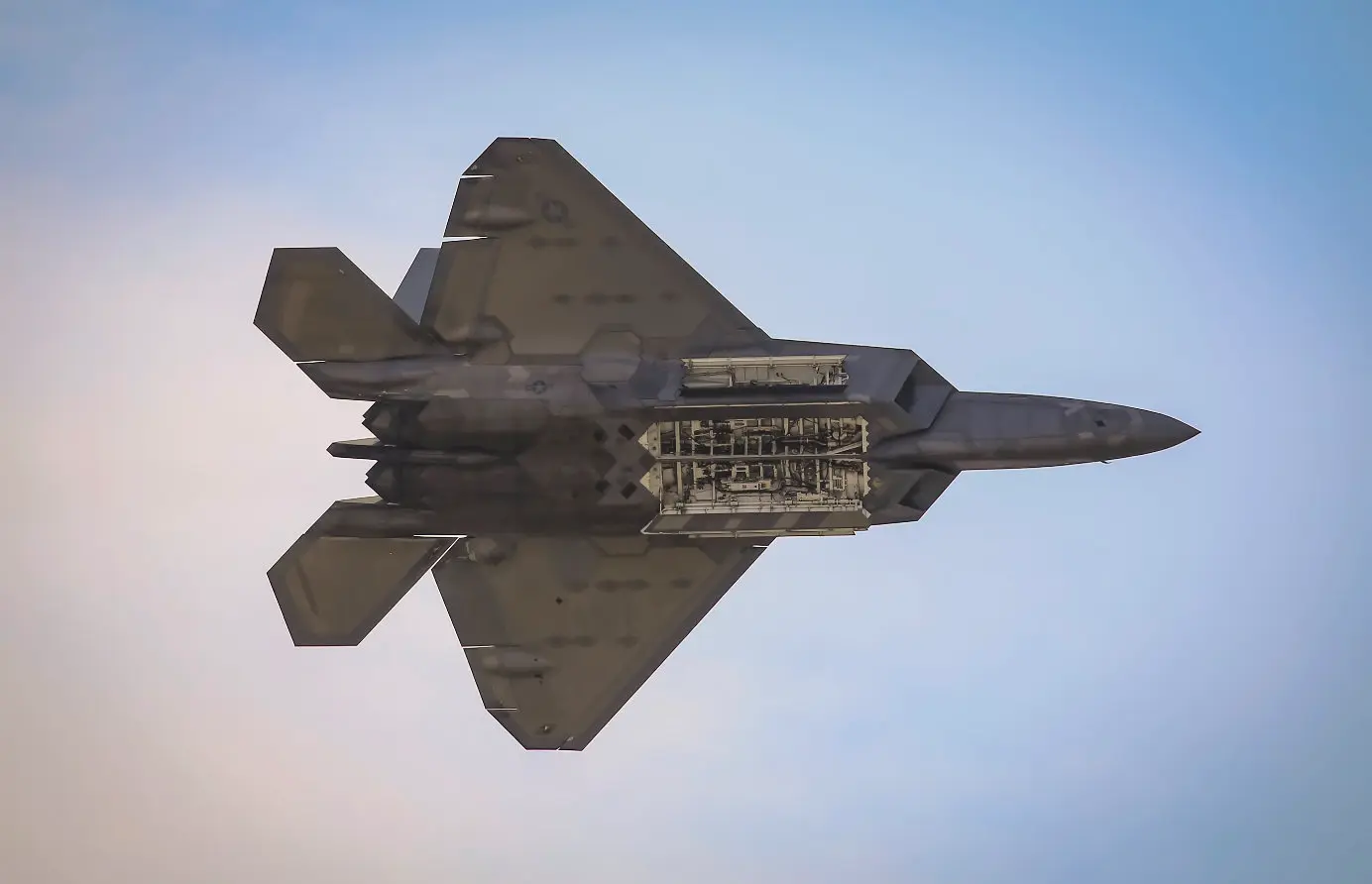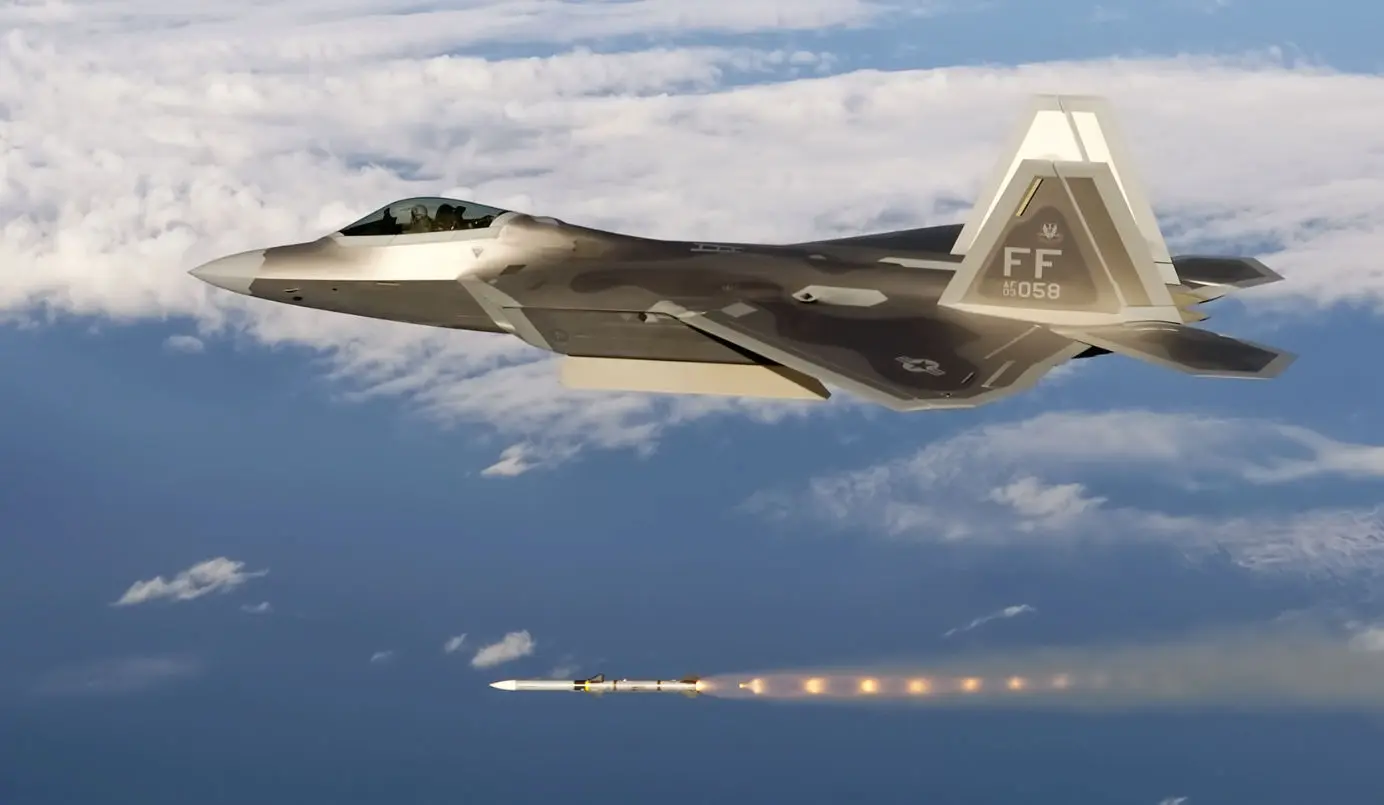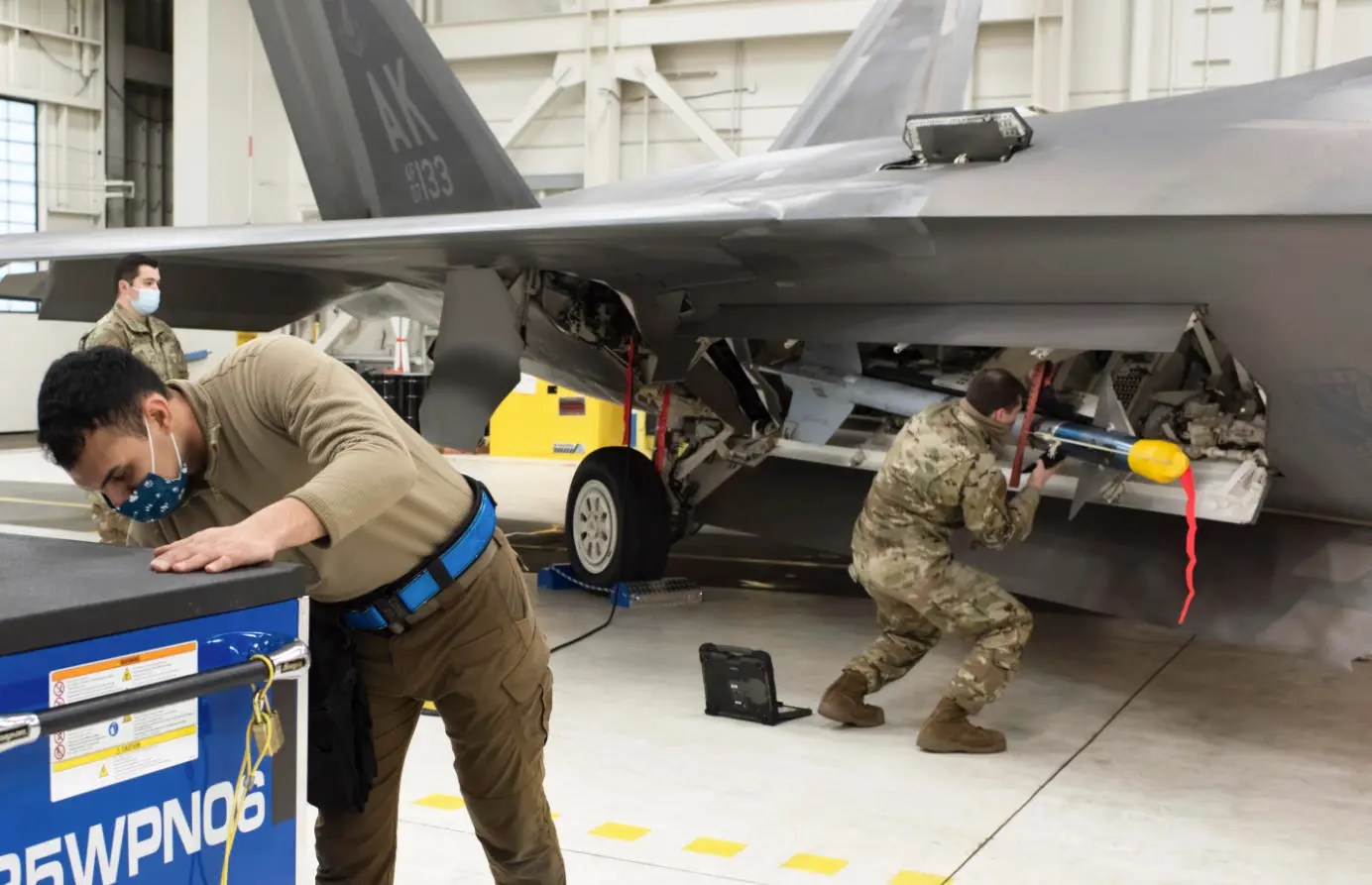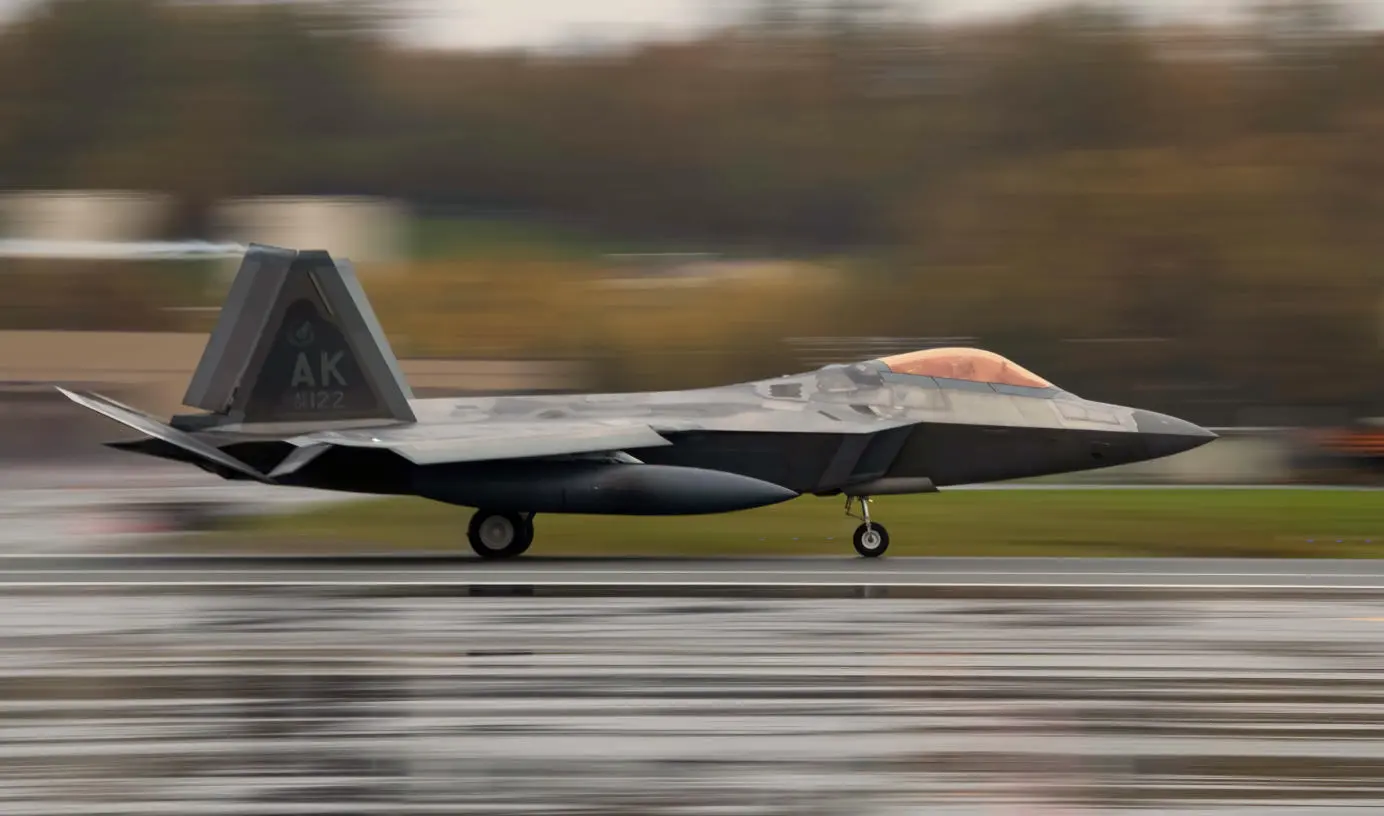
The F-22 Raptor’s Armament: Everything You Need to Know
The F-22 Raptor's primary role is to establish air dominance. Find out more about the F-22 armaments here.
Table of Contents
The F-22 is one of the most advanced fighter jets in the US Military. Together with its high speed, maneuverability, advanced sensors, and stealth technology, this is due to the different types of weapons it can carry. Depending on how the aircraft is configured, the F-22 can tackle both air-to-air and air-to-ground combat with ease.
The fact that the F-22 can be fitted out with different types of weaponry makes it an effective fighter on the battlefield. Even though the F-22 Raptor has long since been discontinued from a manufacturing perspective, there are plans to allow it to accept even more different types of weapons. This isn't that much of a surprise.
Let's take a look at the F-22 Raptor armaments.
Mounted Gun - M61 Vulcan
Like most other fighter aircraft, the Raptor is equipped with a gun. This is a 20mm rotary gun with 480 rounds. For stealth purposes, Lockheed Martin mounted it internally on the F-22 Raptor. A small door opens to allow the firing of the weapon. It is rarely used because the missiles should be enough to keep threats at bay. But because the missiles have some limitations, the Raptor has a gun.
The M61 Vulcan is pretty much the same gun that has been included in US Military aircraft for several decades now, since its debut in 1959. It is a last-resort type of weapon for when the missiles have been fired. Although, as we said, it is rarely going to be used. An F-22 should never be in a position where it needs to fire a rotary weapon.
Air-to-Air Armaments
For stealth, the F-22 Raptor uses internal weapon bays and the fighter has three. One main weapons bay on the bottom of the fuselage and two smaller side bays - one on each engine inlet. The third bay is for countermeasures and flares and is located behind each side bay. All bays are hidden behind pneumatic doors for low radar observability.
If the F-22 is heading out on a mission where air-to-air combat is likely (which is the Raptor's primary function being an air superiority fighter), then the aircraft will typically be loaded up with two different types of missiles, totaling eight missiles.
Six AIM-120 AMRAAM
The AMRAAM stands for 'Advanced Medium Range Air to Air Missle'. You can see why it was shortened. As the name suggests, it is a missile intended for medium-range air-to-air combat.
The F-22 will typically carry six of these on board.

An AMRAAM is a missile known as a 'fire and forget' missile. In the past, if you wanted to launch a missile toward a threat, you would need to provide continuous guidance from the firing aircraft. Not the AIM-120 AMRAAM. Assuming everything is set up properly at the start (and it will be with skilled pilots in the cockpit), then the AMRAAM can be launched and it will work its way toward the target with ease on its own. For the enemy, it is a challenging missile to dodge.
Depending on the conditions, this missile can travel between 31 and 99 miles (depending on the variant) at Mach 4. Effective enough to stop or deter the vast majority of airborne threats.
Do bear in mind that these missiles are not used all that often. In fact, it is rare that air-to-air combat happens nowadays because the US Air Force is able to establish air superiority quite often. When AMRAAMs are used, they have a reasonably high chance of success. According to the AMRAAMs manufacturer, the reliability has been proved by over 4,900 test firings and over 13 air-to-air combat hits.
Two AIM-9 Sidewinder
Typically, the F-22 Raptor carries two AIM-9 Sidewinder missiles in addition to the AMRAAMs.
AIM-9 Sidewinders are short-range missiles for engagements within visual range (10 and 18 miles). The Sidewinder is also the most used air-to-air missile by western countries. More than 110,000 missiles have been built.

On the F-22 Raptor, the AIM-9 Sidewinders are rarely going to be used. Because of the Raptor's capabilities and technological advantages, an enemy is unlikely to get close enough for the Sidewinder to become relevant. The stealth capabilities and the great threat detection capabilities of the F-22 mean that threats should never be able to get close enough to the F-22 to get a shot off.
Most Sidewinders use infrared tracking (while a few use semi-active radar homing) which isn't as accurate as the AIM-120 missile but should be fine at close range.
Planned: AIM-260 JATM
This is a long-range missile that will likely be used on the F-22 in the future.
The AIM-260 JATM is designed to counter threats that are within a 120-mile range and the missile can travel faster than the AIM-120 at speeds up to Mach 5.
At the time of writing, nobody knows how many of these missiles will be carried by the F-22. There is a chance that they can replace the AIM-120s.
Air-to-Surface Armaments
The F-22 Raptor is an air superiority fighter first of all, but it can do air-to-ground missions too. When the F-22 is in air-to-surface configuration, it will typically carry three different types of weapons.
In the air-to-ground configuration, it will often keep two of the AIM-120s and both of the AIM-9 Sidewinders. This is to help the aircraft if it manages to get into difficulty with other aircraft when it is attacking a ground target. Of course, it still has the M61 Vulcan gun internally too.
The main difference when in air-to-surface configuration is the inclusion of two 1,000 lb GBU-32 (JDAM) bombs. These munitions have been designed purely for hitting targets on the ground, and they land with an incredible amount of force.

The GBU-32 makes use of the Joint Direct Attack Munition (JDAM) kit. This is a highly advanced guidance system that ensures that the bomb hit its target no matter the weather conditions.
Alternatively, the F-22 Raptor can also carry eight 250 lb GBU-39 Small Diameter Bombs.
No matter the configuration, the F-22 tries to keep as many of the missiles inside of the aircraft as possible. This is to help with the stealth capabilities of the aircraft. That being said, there are locations on the outside of the aircraft that will allow up to four more weapons (or two external fuel tanks). These will typically be air-to-air combat missiles. Up to 2 extra air-to-ground munitions can be included instead if desired. In most cases, these slots will be used for extra fuel tanks instead. Those fuel tanks can be ditched very easily to ensure that the F-22 remains stealthy.

Conclusion
The effectiveness of the F-22 is supported by the varied armaments that it can carry. Its combination of stealth technology, sensing capabilities, high maneuverability, and high speeds gives the Raptor the upper hand in air superiority combat. It reduces the enemy's ability to track and engage and gives it the element of surprise when attacking. It is no wonder that the US Air Force is planning on sticking with the F-22 Raptor for the long term.
The F-22 armaments that we have talked about here are the current configuration of the aircraft (and the known planned configurations). It is likely that things will change in the future as the Raptor is upgraded and new weapon systems come to life. How this is going to be playing out is unknown but the F-22 will likely remain an efficient and capable tool for the military.
Also read:
Planenerd Newsletter
Join the newsletter to receive the latest updates in your inbox.






